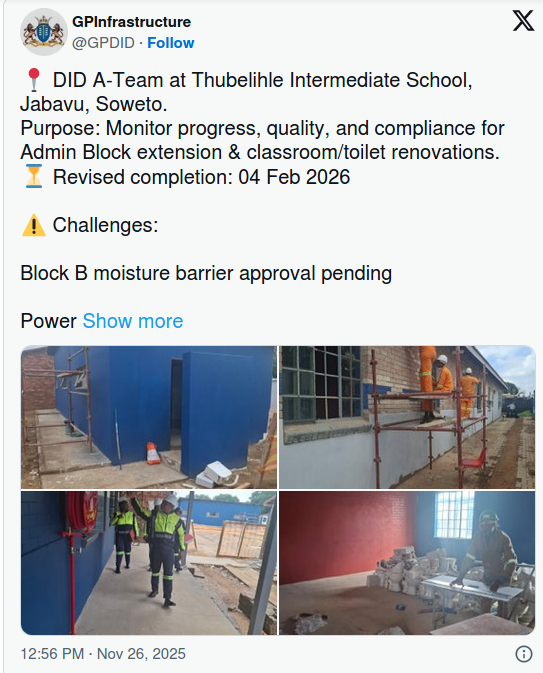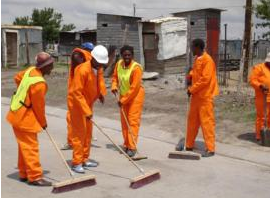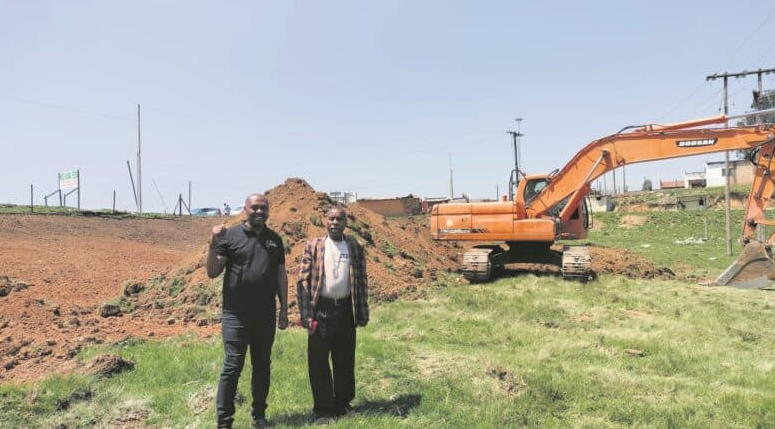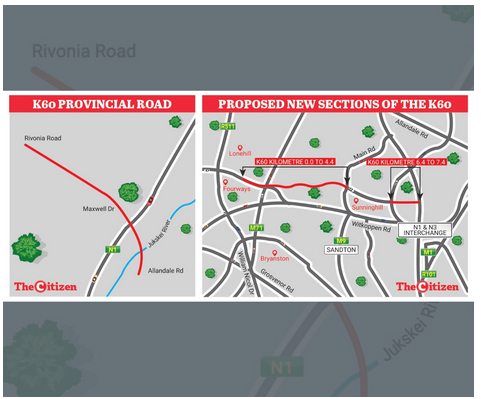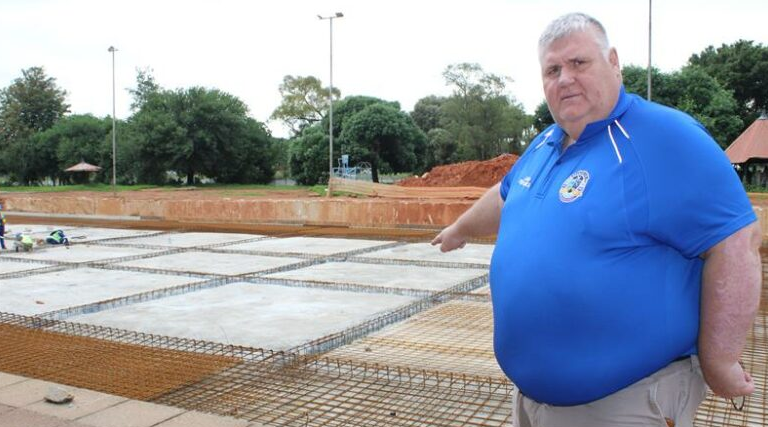How Ethekwini Municipality gets it right in liaising with Property Developers

Advertising
10-06-2021
Read : 513 times
Property Wheel
Source
The most recent annual conference of the Western Cape Property Development Forum (WCPDF) aimed to find ways for the private and public sector to work closer in partnerships, with the highlight being a model approach from the eThekwini Municipality which other municipalities should aspire to follow.
Under the theme ‘Vision for Growth’, the primary goal of the event held at the end of May was to begin to set aside the stalemates that had been experienced by both sectors in the Western Cape and within most South African municipalities.
Echoing the thoughts of many of the delegates, Eric Foster – founder and director of Cape Town-based EFG Engineers – felt the most significant impediments to economic growth in the property development and construction sector were two-fold: on a macro level, the lack of government departments, across the different spheres, being able to talk to each other and, on a micro level, the inevitable silo effect between different departments within the same authorities.
“Development is highly dependent on successful interaction between many parties before any project can be given the go-ahead, and that interaction must lead to cooperation. Therefore, the more the process can be facilitated and streamlined, the faster it will yield results – and most importantly, economic growth and job creation.”
Bringing together speakers from across the country to provide examples of successful public-private partnerships, by far the biggest impact made during the event was a presentation by Lekha Allopi, Project Executive within the Development Planning Department of eThekwini Municipality.
According to Deon van Zyl, Chairperson of the WCPDF: “The word in Durban is that when developers pick up the phone, they get Lekha on the other end. The buck begins and ends with her department, and she has set a process in place that successfully gets cross-silo teams to work together who are both inspired and focused on delivery.”
For a few years now, the eThekwini Municipality has been lauded for its forward-thinking integrated planning and implementation of its strategies. Having set into place a 2030 vision for both the planning of numerous complex projects and to enable the municipality to successful move as swiftly as possible to procurement and rollout, it has created a culture for decision making, delivery and growth that other municipalities would do well to emulate. (See Box: A Six-Point Process for Project Approval.)
Allopi has been an integral part of this vision, both in a management capacity within eThekwini’s Land Use Management Branch, and more recently having joined the Catalytic Project Office. With over 30 years of statutory planning behind her, Allopi was also the author of the first-ever Planning Bylaw for the City of Durban.
Citing various examples of how municipalities often fail in their mandates to formulate effective visions for growth, but even more importantly deliver successfully against these, Allopi puts the failure down to: “Layers of red tape, supported by poor human and intellectual capacity thus rending economic development even more difficult, costly and complex.”
Agreeing with Foster, Allopi believes that – among the impediments to success overall – is the inability of the three spheres of government to talk to each other and produce a vision for the country: “Policies and directives through which to drive this country are lacking, and this seriously impacts the way that provinces should interact with each other and their citizens”.
“There needs to be stronger, more focused leadership that directs us – citizens as well as municipalities – to within a consolidated space where decision making is informed, logical and sensible and where economic drivers are unblocked.”
Another area of concern Allopi highlights is the disconnect between a municipality’s vision and ever-changing economic priorities: “Municipalities across the country have Integrated Development Plans [IDPs] and Spatial Development Frameworks [SDFs] which obviously contain the municipality’s vision, and which are meant to translate strategies into projects. But what you will now find is that the economic priorities start to differ within the municipality as well, even when there is a vision, and departments start to champion their own projects.”
But this lack of co-ordination between departments leads to poor decision making, to the detriment of the municipality, and is further exacerbated when the market starts to drive development contrary to the municipality’s development priorities.
This often results in applications being submitted that are not aligned with the municipality’s vision, and which the municipality will then refuse – a huge mistake, according to Allopi: “I strongly believe that when a developer approaches a municipality with any proposal, the answer can never be: ‘No.’ It has got to be: ‘Yes!’ And then directed in a responsible way where it makes better sense for it to go.”
While Allopi believes it is up to a city’s Planning Unit to drive the vision of a municipality, what stops this from happening effectively is that the IDP and SDF often sit in different departments – again, part of the silo mentality.
“But the planning space is the entry to any municipality and therefore delivering on a city’s mandate should sit with the Planning Department. This obviously will direct better decision making at the very outset, but the key lies in the writing of the Planning Bylaw.”
Allopi also believes that if planning processes are clear and intelligent as well as legally competent, then developers too will be more competent in submitting applications. But she holds no fear at all in telling a developer to go back to the drawing board.
David Faure, also a director at EFG Engineering notes: “If one believes and lives by the phrase that the answer can never be: ‘No,’ it means that a municipality’s focus is clearly on what it can do to make development happen”.
But he also agrees a great deal of responsibility for this lies in the hands of the developer: “A developer must get the fundamentals right and submit a complete, competent application that compels the municipality to make a decision. You cannot expect a City to support development if the application is flawed”.
However, a process such as the one eThekwini has in place gives developers across the country hope, says Foster: “This process clearly shows that if you get the fundamentals right, you can effect and have meaningful change.”
Van Zyl agrees: “The speed at which such an inclusive process can be delivered should be a revelation to the rest of South African municipalities. It is a testimony to what can be done.”
A six-point process for project approval:
The Catalytic Project Office within the eThekwini Municipality, managed by Lekha Allopi, has developed a clear set of criteria to enable development proposals with a value of R500 million and above to be driven through the system as swiftly as possible:
- The developer’s application enters the system electronically via the Development Facilitation office, which decides that the project qualifies in terms of value and is therefore catalytic to the city. From the day it is received, the developer is given three days to set up a meeting with Allopi’s team. This is an introductory meeting for which the developer (and perhaps the project’s architect) come prepared with all relevant assessments including, for example, a Traffic Impact Analysis (TIA) and an Environmental Impact Assessment (EIA).
- The full extent of the project is outlined to Allopi’s skilled team, who in turn note all internal City departments as well as external stakeholders and service providers that should either be engaged with or who would have an interest in the project.
- The next step is to set up a transversal meeting with the project’s entire professional development team and representatives from all internal and external parties, during which “skill for skill” is matched. (“Sometimes,” notes Allopi, “we have up to 24 interested and affected or internal and external parties around the table with us.”) All possible information about the project is exchanged between the parties, and questions arising at this point in time answered.
- Specialist studies presented at the meeting are then sent electronically to all relevant City departments and external parties, with a period of 10 days maximum given for comments. Comments not received timeously are reported to the City Council for noting.
- All comments are then shared with the developer. “Bear in mind,” notes Allopi, “that at this stage no application has yet formally been accepted and no fees have yet been taken. We are basically still just running through all the potential issues to put solutions on the table and sign off on comments.”
- By this point, with all potential blockages having been cleared, the application is formally submitted and fees due are paid. The application is then advertised on the City’s electronic portal with a 30-day objection period in place. “We can’t avoid that,” says Allopi, “because that’s the law and it cannot be relaxed.”
“We’ve had a site development plan approved in a day; we’ve had a planning decision taken in a week; we’ve had things like shopfront applications approved in hours,” notes Allopi. “So, we are trying to make a difference through responsible, informed, effective and efficient decision making in order to realise the City’s Vision.”
Recent News
Here are recent news articles from the Building and Construction Industry.
Have you signed up for your free copy yet?
